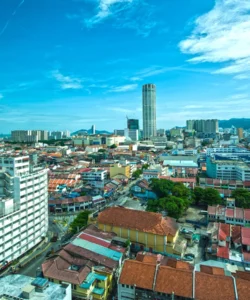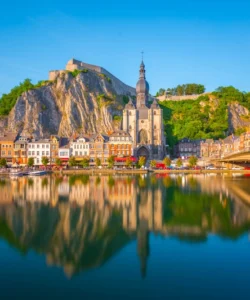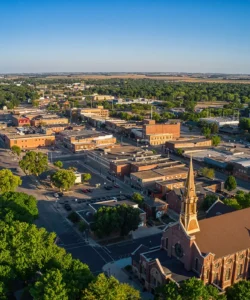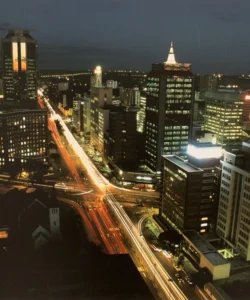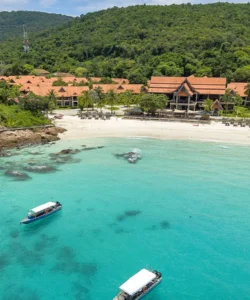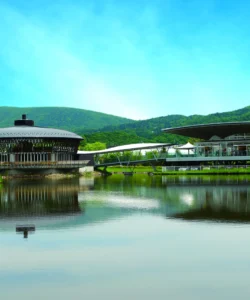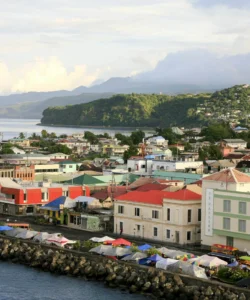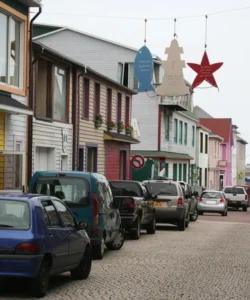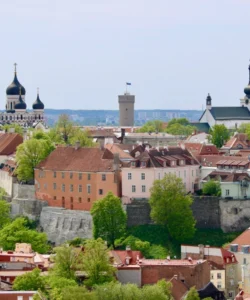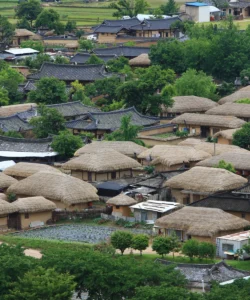Suriname is a small country on the northeastern coast of South America, known for its dense rainforest, diverse culture, and Dutch colonial heritage. It is the smallest sovereign state in South America.
![]()
Area and Population:
Suriname covers an area of approximately 163,820 km² (63,251 sq mi). Its population is estimated to be around 633,000 inhabitants (as of 2024), making it one of the least populated countries in the world.
Language:
The official language of Suriname is Dutch. However, Sranan Tongo (also known as Surinamese Creole) is widely used as a lingua franca among different ethnic groups. Other languages spoken include Hindi (Sarnami Hindustani), Javanese, Chinese, and various Maroon and Amerindian languages. This linguistic diversity reflects its unique ethnic composition.
Currency:
The currency of Suriname is the Surinamese Dollar (SRD).
Religion:
Suriname’s religious landscape is remarkably diverse, reflecting its multi-ethnic society. The main religions include Christianity (Catholicism and various Protestant denominations), Hinduism, and Islam. There are also followers of indigenous spiritual beliefs and other faiths.
Capital:
The capital city of Suriname is Paramaribo, located on the Suriname River, about 15 km (9 miles) inland from the Atlantic Ocean. Its historic inner city is a UNESCO World Heritage site, famous for its unique Dutch colonial architecture.
Major Cities:
Due to its small population and extensive rainforest, Suriname has few large cities. Besides Paramaribo, other significant towns and settlements include:
- Lelydorp: A major town south of Paramaribo.
- Nieuw Nickerie: Located in the western part of the country, near the border with Guyana, important for agriculture.
- Moengo: A bauxite mining town in the east.
Attractions and Wonders:
Suriname’s attractions largely focus on its pristine natural environment and unique cultural heritage.
- Central Suriname Nature Reserve: A vast UNESCO World Heritage site, one of the largest protected rainforest areas in the world, home to incredible biodiversity. It offers opportunities for eco-tourism, wildlife spotting, and trekking.
- Historic Inner City of Paramaribo: A UNESCO World Heritage site featuring stunning well-preserved wooden colonial buildings, especially along the waterfront and around Independence Square.
- Peperpot Nature Park: A former coffee and cocoa plantation near Paramaribo, now a popular spot for birdwatching and gentle walks.
- Commewijne District: Known for its historic plantations (some accessible by boat or bike tours) along the Commewijne River, offering insights into Suriname’s colonial past.
- Galibi Coppename Nature Reserve: A coastal reserve important for sea turtle nesting, particularly the Leatherback turtle.
- Brownsberg Nature Park: A protected area around the Brokopondo Reservoir, offering hiking trails and waterfalls.
- Joden Savanne: The remains of a historic Jewish settlement from the 17th century, providing a glimpse into Suriname’s unique history.
- Voltzberg Dome: A large granite inselberg within the Central Suriname Nature Reserve, offering panoramic views after a challenging climb.
Architecture:
Surinamese architecture, particularly in Paramaribo, is distinctive for its wooden colonial buildings, which combine Dutch architectural styles with local materials and techniques. These often feature high pitched roofs, large shutters, and decorative elements. There’s a unique blend of European and Caribbean influences, making Paramaribo’s historic center visually unique among UNESCO sites.
Roads:
Suriname’s road network is relatively limited, with the most developed roads concentrated in the coastal plain, connecting Paramaribo with the main agricultural and urban areas to the east and west. Roads into the vast interior are sparse and often unpaved or poorly maintained, with many areas only accessible by small aircraft or dugout canoes (korjalen) via its extensive river system.
Hotels:
In Paramaribo, you can find a range of hotels from international chains to smaller boutique hotels and guesthouses. Outside the capital, accommodation options are more limited, typically consisting of eco-lodges, guesthouses in smaller towns, or basic facilities in remote interior villages, catering to adventure and nature tourists.
Restaurants and Cuisine:
Surinamese cuisine is a vibrant reflection of its multi-ethnic population, drawing influences from Dutch, Javanese, Indian (Hindustani), African, Chinese, and indigenous traditions. It’s often considered one of the most diverse and flavorful cuisines in the Caribbean and South America.
- Key Dishes:
- Roti: Indian-style flatbread served with curried chicken, potato, and vegetables.
- Nasi Goreng / Bami Goreng: Popular Javanese fried rice or noodle dishes, often served with chicken or satay.
- Pom: A savory oven-baked dish made with the pomtajer root (taro), chicken, and citrus juice.
- Moksi Alesi: A mixed rice dish with various meats, fish, and vegetables.
- Dawet: A sweet, refreshing drink made with coconut milk, palm sugar, and often pandan leaf.
- Pinda Soep: A rich and creamy peanut soup, often with chicken.
- Saoto Soup: A clear Javanese chicken soup with various toppings, often served with rice.
- Restaurants: Paramaribo offers a wide array of restaurants, from fine dining to numerous casual eateries and street food stalls (warungs) serving a mix of Surinamese, Javanese, Indian, and Chinese dishes. It’s a fantastic place for food exploration due to its unique fusion cuisine.

